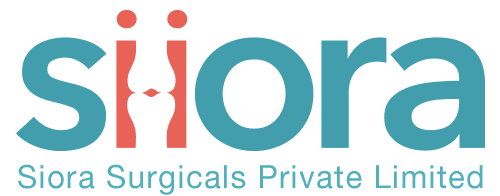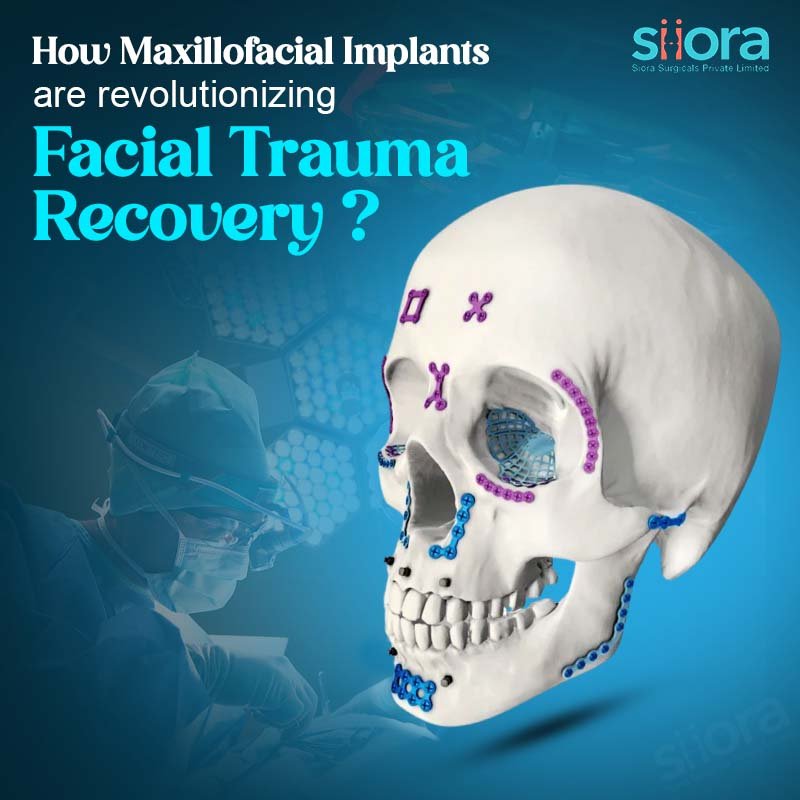Facial trauma can be life-altering. Whether caused by road accidents, sports injuries, falls, or physical altercations, trauma to the face doesn’t just affect a person’s appearance; it can compromise basic functions like breathing, chewing, speaking, and even seeing. For many years, treating these injuries was as much about managing damage as it was about accepting long-term scarring or disfigurement. But today, maxillofacial implants are changing that narrative dramatically.
With advancements in surgical techniques, materials science, and biomedical engineering, recovery from facial trauma no longer means “just healing.” It now means restoration of form, function, and confidence. At the heart of this revolution are innovations like maxillofacial plates and screws, Extraoral implants, and resorbable plates in maxillofacial surgery, supported by precision-designed maxillofacial surgical instruments. Let’s explore how these tools and technologies are reshaping recovery in the best possible way.
The Evolution of Facial Trauma Treatment
In the past, treating facial injuries meant relying on traditional wiring techniques or bulky external fixation devices. Healing was slow, alignment was often imperfect, and results could be unpredictable. Over time, the field of oral and maxillofacial surgery has grown into a sophisticated specialty that blends medical science, dental knowledge, and engineering.
There has been the use of biocompatible materials to fabricate these medical-grade devices like titanium or resorbable polymers. They are surgically placed to restore structural integrity, align fractured bones, and help soft tissues heal in the correct position. With their help, surgeons can reconstruct the most complex facial injuries with a level of precision and aesthetic consideration that was previously unimaginable.
Maxillofacial Plates and Screws: The Foundation of Modern Facial Reconstruction
Among the most frequently used tools in trauma recovery are maxillofacial plates and screws. These come in various shapes and sizes, each designed to contour perfectly to the facial anatomy. Whether stabilizing a fractured mandible (jawbone), reconstructing orbital walls (eye socket), or repairing zygomatic arches (cheekbones), these tiny but powerful implants play a major role.
What makes them so effective is their ability to hold bone fragments together in a stable position during the critical early healing phase. This not only accelerates recovery but also reduces complications like malocclusion (misaligned bite) or asymmetry. Moreover, many of today’s systems offer modularity, allowing surgeons to customize the configuration depending on the unique needs of the injury.
The Rise of Extraoral Implants in Severe Trauma Cases
While many maxillofacial implants are placed inside the mouth (intraorally), some injuries require a different approach. That’s where Extraoral implants come into play. Used in cases of extensive damage or deformity, often involving the nose, cheek, or forehead, these implants are placed outside the oral cavity but still serve to anchor or support facial structures.
Extraoral systems are often used in conjunction with reconstructive flaps or prosthetics, providing a stable foundation when native bone is insufficient. They are also invaluable in oncology-related surgeries, where large portions of facial tissue may have been removed. These implants enable not just reconstruction, but true facial rehabilitation.
The Game-Changer: Resorbable Plates in Maxillofacial Surgery
While titanium implants are durable and reliable, they come with one warning: they often require a second surgery to remove. This is especially problematic in pediatric patients or cases where repeated procedures pose additional risk.
That’s where resorbable plates in maxillofacial surgery come in. Made from biodegradable polymers like polylactic acid, these implants gradually dissolve in the body as the bone heals. This eliminates the need for removal while still providing the stability needed during recovery.
Resorbable implants have opened doors to treating younger patients more effectively and safely. They’re also a great option for those concerned about long-term foreign material in the body. Surgeons today can choose from a wide range of resorbable systems tailored to various injury types and healing timelines.
Precision Tools: Maxillofacial Surgical Instruments Make It All Possible
None of this innovation would be possible without the evolution of maxillofacial surgical instruments. These specialized tools, ranging from precision drills and bone spreaders to miniplate benders and micro saws, allow surgeons to execute delicate procedures with incredible accuracy.
Modern surgical kits are ergonomic, intuitive, and adaptable, minimizing operating time while improving outcomes. In trauma care, where every second counts and every millimeter matters, having the right instruments on hand can make all the difference. And when combined with imaging technologies like 3D CT scans and virtual surgical planning, the results can be transformative.
Beyond Recovery: A Return to Normal Life
What makes all of these advancements truly remarkable isn’t just the science, it’s the impact on real people’s lives. Patients who would once have faced months of disfigurement and social withdrawal are now returning to work, school, and family life with minimal disruption.
With modern maxillofacial implants, recovery timelines are shorter, complications are fewer, and long-term results are far more satisfying. Whether it’s a teenage athlete with a broken jaw, a construction worker injured on the job, or a cancer survivor undergoing facial reconstruction, these technologies are making it possible for individuals to move forward not just with healing, but with dignity.
Looking Ahead
As materials become more advanced and surgical techniques continue to evolve, the future of maxillofacial trauma care looks even more promising. Researchers are exploring nanomaterials that promote faster bone regeneration, patient-specific 3D-printed implants for a perfect anatomical match, and smart implants that can monitor healing in real-time.
In this new era, recovery isn’t just about surviving trauma, it’s about thriving after it. Thanks to the ongoing development of maxillofacial plates and screws, extraoral implants, resorbable plates in maxillofacial surgery, and precision-engineered maxillofacial surgical instruments, that goal is more achievable than ever.
Conclusion
Facial trauma will always be a serious medical challenge, but with the advent of modern maxillofacial implants, the outlook for recovery has never been brighter. What was once a lengthy, painful, and often emotionally scarring process is now being replaced with minimally invasive procedures, faster healing, and more natural-looking results.
The message is clear. Innovation in maxillofacial surgery isn’t just about new tools; it’s about restoring lives. And as technology continues to evolve, the impact of these breakthroughs will only grow stronger, offering hope and healing to those who need it most.







